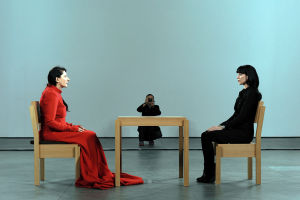Ancient Art, Modern Magic
Lykkers, step closer! Ever run your fingers over a modern mural and felt an echo of something profoundly old? That’s no accident. Long before sleek galleries, humanity poured its soul onto walls – caves, homes, sacred spaces.
These ancient art forms weren't mere decoration; they were stories, prayers, and celebrations etched in pigment and line. Their power hasn't dimmed. Instead, they fuel a vibrant resurgence in contemporary wall art and murals, proving that true artistry transcends millennia. Let's uncover the living legacy of these astonishing traditions.
Pattachitra's Storytelling Power
Journey to eastern India, specifically Odisha. Here, Pattachitra – literally 'cloth picture' – unfolds like a visual epic. Imagine intricate narratives painted on treated cotton scrolls or tussar silk, using vibrant, natural pigments. Traditionally, artisans ground stones like Hingula (vermilion) and Haritala (yellow orpiment) to create a dazzling palette. The defining features?
Elaborate borders framing scenes bursting with detail, and a unique fish-eye perspective where figures appear slightly elongated. Modern muralists adore adapting these techniques. Think grand public murals telling community stories, or interior accent walls featuring the intricate floral motifs and mythological figures characteristic of Pattachitra, but reinterpreted for today's spaces.
Warli's Rhythmic Geometry
Travel west to the lands of the Warli tribe. Their art is a masterclass in minimalism speaking volumes. Using only stark white pigment – traditionally made from rice paste and gum – on earthy mud walls or red ochre backgrounds, Warli relies solely on basic shapes: circles (sun, moon), triangles (mountains, trees, people), and squares (enclosures).
These simple elements combine into dynamic scenes celebrating daily life, harvest festivals, and the profound connection between humans and nature. Contemporary artists leverage this powerful simplicity. Warli-inspired murals bring a serene, grounded energy to modern minimalist interiors, corporate lobbies seeking warmth, and children's spaces, teaching rhythm and form through ancient visual language.
Tribal Marks Endure
Globally, indigenous rock art and wall paintings form humanity's oldest visual archive. From the Bradshaw figures in Australia's Kimberley region to the powerful San rock art of Southern Africa and India's own diverse tribal expressions, these artworks share common threads. They utilize earth pigments – ochres, charcoals, chalks – and depict essential themes: hunting scenes, spiritual rituals, creation myths, and profound reverence for the natural world and animal spirits.
The styles range from highly detailed to powerfully abstract. Modern muralists draw deep inspiration from this raw, primal energy. Think urban murals featuring stylized animal forms, contemporary abstracts echoing ancient symbols, and textured surfaces mimicking rock faces. This connection honors ancestral voices while creating strikingly modern statements.
Threads Through Time
What binds these ancient forms to today's vibrant mural scene? It's the fundamental human impulses they embody: the need to tell stories, to connect with community and nature, to beautify surroundings, and to express spiritual beliefs or cultural identity. Modern tools may change – acrylic paints, spray cans, digital projectors – but the core motivations resonate. Artists now blend techniques: a mural might incorporate Warli's geometry within a Madhubani-inspired border, or use tribal earth tones to depict contemporary narratives learned from Ajanta's grace. This fusion isn't imitation; it's a dynamic conversation across centuries.
Your Wall's Ancient Soul
Lykkers, these ancient art forms are far from relics. They are vibrant, living languages of line, color, and symbol. They whisper secrets of craftsmanship – grinding pigments, mastering natural binders, understanding sacred geometry. They shout universal stories of life, connection, and wonder. By embracing these traditions, contemporary artists don't just copy the past; they tap into a deep wellspring of human creativity, ensuring these whispers from ancient walls continue to resonate.
So, next time you admire a stunning mural, look closer. You might just see the elegant ghost of a Warli dancer, the vibrant echo of a Madhubani peacock, or the timeless gaze of an Ajanta Bodhisattva. Which ancient art form speaks most powerfully to you? Share how you'd weave its magic onto a modern wall!
-
 Guitar Solo MagicWhich Guitarists Leave Us Speechless? Explore the Art of Solo Guitar and the Legends Who Redefined the Strings!
Guitar Solo MagicWhich Guitarists Leave Us Speechless? Explore the Art of Solo Guitar and the Legends Who Redefined the Strings! -
 When Art Takes the StageWhat happens when art walks, speaks, or screams? Performance art defies norms, turning life into a raw, unforgettable show.
When Art Takes the StageWhat happens when art walks, speaks, or screams? Performance art defies norms, turning life into a raw, unforgettable show. -
 Artistic Phone PhotographyWant Stunning Photos with Just Your Phone? Master These Artistic Photography Tips Anyone Can Use!
Artistic Phone PhotographyWant Stunning Photos with Just Your Phone? Master These Artistic Photography Tips Anyone Can Use!
Contact to : xyjph123@gmail.com
Privacy Agreement
Copyright © boyuanhulian 2020 - 2022. All Right Reserved.
Privacy Agreement
Copyright © boyuanhulian 2020 - 2022. All Right Reserved.